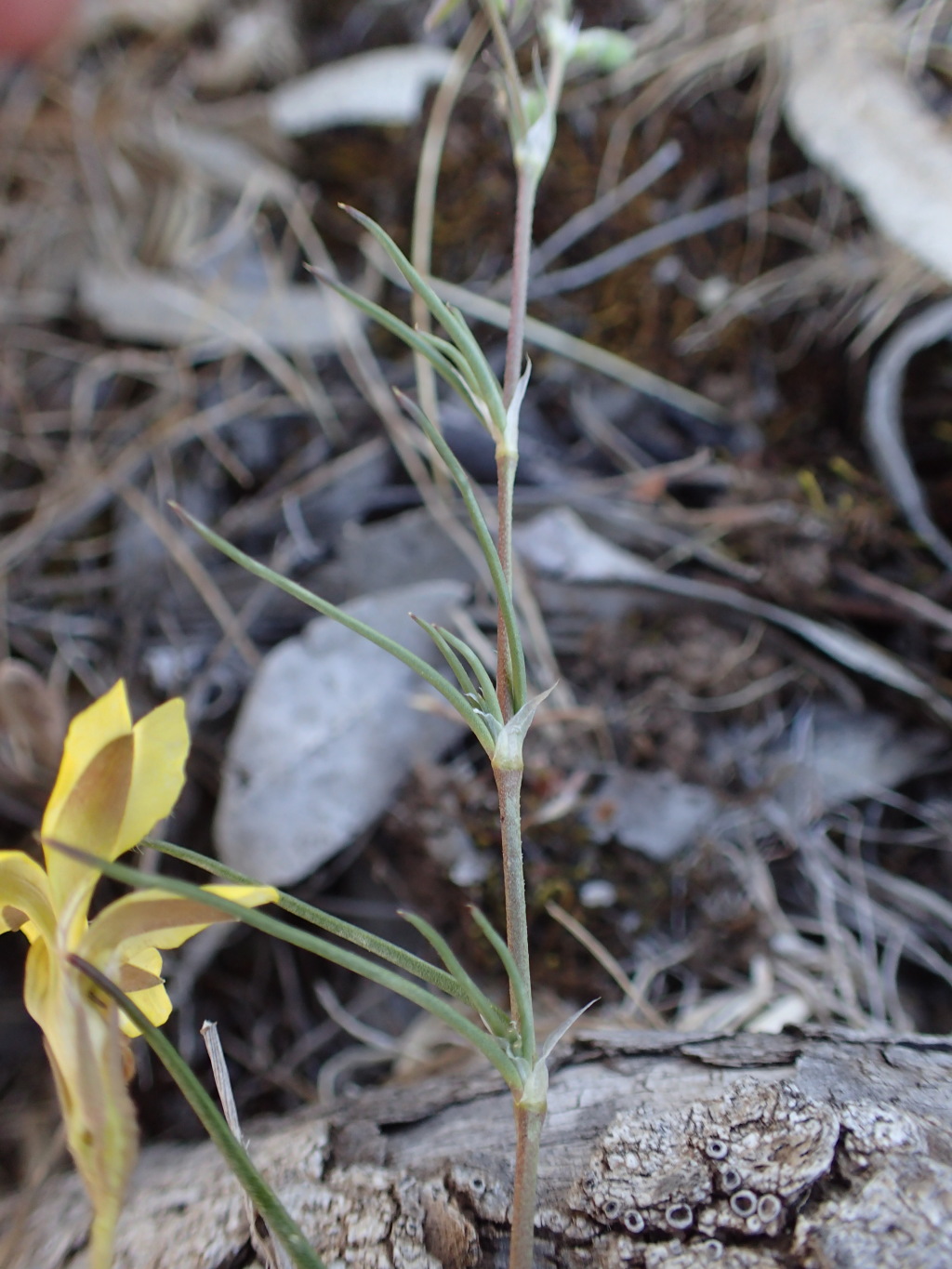Spergularia brevifolia
(Bartl.) Walp.Annual to short-lived perennial; rootstock slender to more or less woody; stems decumbent to erect, (3–)6–15(–35)cm long, mostly glandular-hairy. Leaves linear-filiform, more or less flattened, mucronate to prominently awned, fasciculate, 5–30 mm long, 0.3–2 mm wide, glabrous to sparsely glandular-hairy; stipules usually long-acuminate, (1–)3–6mm long, connate for less than half their length. Inflorescence lax, few to many-flowered, more or less monochasial above; pedicels at first strongly reflexed in fruit, finally spreading, equalling to much longer than sepals, glandular-hairy. Flowers (5–)7–10mm diam.; sepals 3–5 mm long, green or purplish, with mid-dense to dense glandular hairs 0.1–0.15(–0.2) mm long; petals c. equalling to much shorter than sepals, uniformly rose-pink or lilac, rarely white; stamens (6–)7–10. Capsules ovoid to subglobose equalling to clearly exceeding sepals; seeds (0.4–)0.5–0.6(–0.7) mm long, more or less smooth to densely and coarsely tuberculate or blunt-papillose, grey-brown to pitch-black, metallic-iridescent, unwinged. Flowers mostly Sep.–Nov.
LoM, MuM, Wim, VVP, VRiv, MSB, RobP, MuF, GipP, OtP, Gold, CVU, GGr, HNF. Also WA, NT, SA, Qld, NSW, Tas. Widespread in more arid and/or salt-affected regions of Australia.
 Spinning
Spinning


